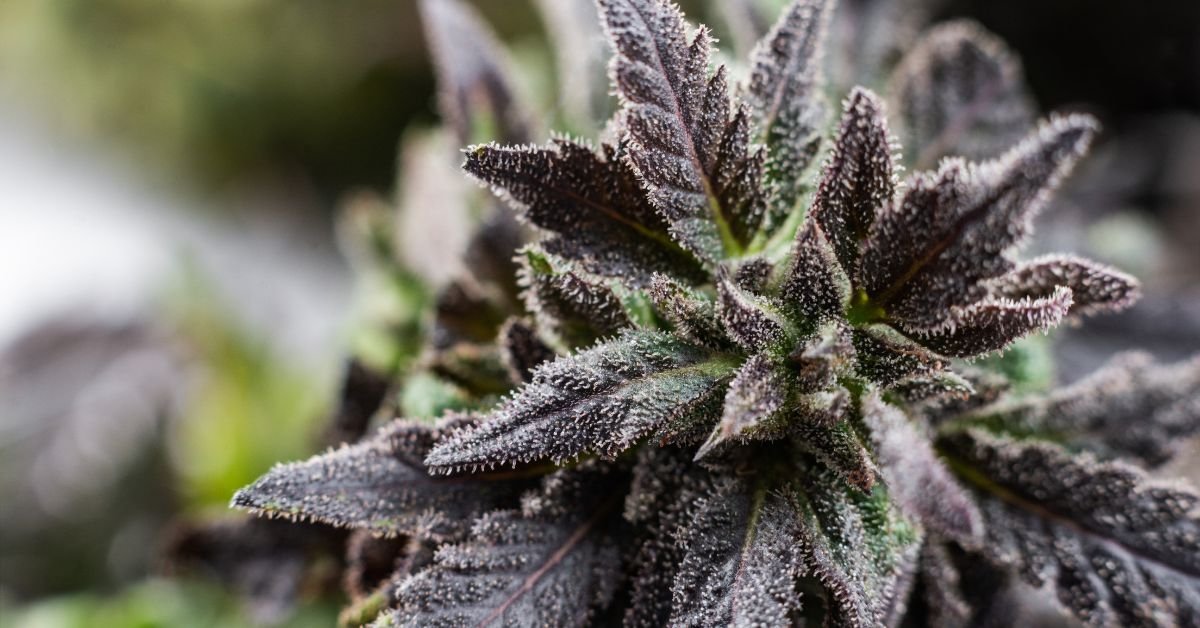Introduction: Beyond THC and CBD
When most people think about cannabis, they focus on cannabinoids like THC and CBD. These compounds certainly play important roles, but they’re only part of the story. The aromatic oils called terpenes are equally crucial to your overall experience.
Terpenes are natural compounds found in many plants, from lavender to pine trees. In cannabis, they create the distinctive smells and flavors that make each strain unique. More importantly, research suggests these aromatic molecules work alongside cannabinoids to influence how you feel—a phenomenon scientists call the “entourage effect.”
At Peaches Garden Dispensary in Atlantic City, we believe educated consumers make better choices. This guide will help you understand terpenes, recognize their effects, and select products that match your wellness goals.
What Are Terpenes?
Terpenes are organic compounds that plants produce to attract pollinators, repel predators, and protect themselves from environmental stress. They’re responsible for the distinctive scents in everything from roses to rosemary.
Cannabis plants produce over 100 different terpenes, though most strains contain just a handful in significant amounts. These molecules evaporate easily, which is why you can smell them when you open a container of cannabis flower.
Why Plants Make Terpenes
In nature, terpenes serve several purposes:
- Protection: Some terpenes repel insects and herbivores
- Attraction: Sweet and fruity terpenes attract pollinators
- Communication: Plants use terpenes to signal neighboring plants about threats
- Healing: Many terpenes have antimicrobial and antifungal properties
When you consume cannabis, these same protective compounds may offer therapeutic benefits to your body.
How Terpenes Work: The Entourage Effect
The entourage effect describes how cannabis compounds work together synergistically. Terpenes don’t just add flavor—they may enhance, moderate, or otherwise modify the effects of cannabinoids.
Think of it like cooking. Individual ingredients have their own flavors, but when combined properly, they create something greater than the sum of their parts. A strain with high THC might feel energizing or relaxing depending on its terpene profile.
The Science Behind the Synergy
Research suggests terpenes interact with your body’s endocannabinoid system and other receptor systems. Some terpenes may:
- Influence how much THC crosses the blood-brain barrier
- Bind to the same receptors as cannabinoids
- Affect neurotransmitter activity
- Provide their own therapeutic effects independent of cannabinoids
This means two products with identical THC percentages can feel completely different based on their terpene content.
Common Cannabis Terpenes and Their Effects
Let’s explore the most common terpenes you’ll find in cannabis products and what makes each one special.
Myrcene: The Relaxation Terpene
Aroma: Earthy, musky, with hints of clove and herbal notes
Also Found In: Mangoes, lemongrass, thyme, hops
Myrcene is the most abundant terpene in many cannabis strains. It’s associated with the relaxing, sedative qualities people often describe as “couch-lock.”
Potential Effects:
- Muscle relaxation
- Calming sensations
- May enhance the absorption of cannabinoids
- Commonly found in evening or nighttime strains
Popular Strains: Blue Dream, Granddaddy Purple, OG Kush
Limonene: The Uplifting Terpene
Aroma: Bright citrus, reminiscent of lemons and oranges
Also Found In: Citrus fruit peels, juniper, peppermint
Limonene delivers that unmistakable citrus punch and is associated with uplifting, mood-enhancing effects.
Potential Effects:
- Elevated mood
- Stress relief
- May support focus and alertness
- Antifungal and antibacterial properties
Popular Strains: Super Lemon Haze, Durban Poison, Wedding Cake
Caryophyllene: The Wellness Terpene
Aroma: Spicy, peppery, with woody undertones
Also Found In: Black pepper, cloves, cinnamon
Caryophyllene is unique because it acts like a cannabinoid, binding directly to CB2 receptors in your endocannabinoid system.
Potential Effects:
- May reduce discomfort
- Supports relaxation without drowsiness
- Potential anti-inflammatory properties
- No psychoactive effects on its own
Popular Strains: Girl Scout Cookies, Bubba Kush, Sour Diesel
Pinene: The Clarity Terpene
Aroma: Fresh pine needles and forest floor
Also Found In: Pine trees, rosemary, basil, parsley
Pinene exists in two forms (alpha and beta) and is one of the most common terpenes in nature.
Potential Effects:
- May promote alertness and memory retention
- Respiratory benefits
- May counteract some memory impairment from THC
- Anti-inflammatory properties
Popular Strains: Jack Herer, Strawberry Cough, Blue Dream
Linalool: The Calming Terpene
Aroma: Floral, lavender-like, with subtle spice
Also Found In: Lavender, mint, cinnamon, coriander
If you find lavender relaxing, you’re already familiar with linalool’s calming properties.
Potential Effects:
- Stress and tension relief
- May support sleep quality
- Mood-balancing properties
- Potential anti-anxiety effects
Popular Strains: Amnesia Haze, Lavender, LA Confidential
Humulene: The Appetite Suppressant
Aroma: Earthy, woody, with subtle spice
Also Found In: Hops, coriander, basil, ginseng
Despite cannabis’s reputation for increasing appetite, humulene may actually suppress hunger.
Potential Effects:
- May reduce appetite
- Anti-inflammatory properties
- Potential antibacterial benefits
- Energizing without jitters
Popular Strains: White Widow, Headband, Girl Scout Cookies
Terpene Profiles Quick Reference
| Terpene | Aroma Profile | Common Effects | Best Time |
|---|---|---|---|
| Myrcene | Earthy, musky, herbal | Relaxing, sedating | Evening |
| Limonene | Citrus, bright, zesty | Uplifting, mood-boosting | Daytime |
| Caryophyllene | Spicy, peppery, woody | Calming, wellness support | Anytime |
| Pinene | Pine, forest, fresh | Alertness, clarity | Daytime |
| Linalool | Floral, lavender | Calming, stress relief | Evening |
| Humulene | Earthy, woody, hoppy | Energizing, focus | Daytime |
How to Choose Products Based on Terpenes
Understanding terpenes empowers you to make more informed choices. Here’s how to use this knowledge when selecting products:
Step 1: Identify Your Goals
Ask yourself what you’re hoping to experience:
- Relaxation and sleep? Look for myrcene and linalool
- Energy and focus? Seek out limonene and pinene
- Balanced wellness? Consider caryophyllene-dominant products
- Mood support? Limonene and linalool combinations work well
Step 2: Read the Label
Many cannabis products now include terpene profiles on their labels. Look for:
- The dominant terpenes listed
- Percentage or milligram content
- The complete cannabinoid and terpene profile
Step 3: Trust Your Nose
Your sense of smell is powerful. When possible, smell products before purchasing. If an aroma appeals to you, there’s a good chance the terpene profile will work well with your body chemistry.
Step 4: Keep a Journal
Track which terpene profiles work best for you. Note:
- Product name and dominant terpenes
- Time of day consumed
- Effects experienced
- Duration of effects
Over time, you’ll identify patterns that help you select products more confidently.
Preserving Terpenes: Storage and Consumption
Terpenes are delicate. Heat, light, and air exposure can degrade them quickly, changing your product’s aroma and effects.
Best Storage Practices
Keep it cool: Store products in a cool, dark place (60-70°F is ideal)
Use airtight containers: Glass jars with tight seals work best
Avoid light exposure: Keep products away from direct sunlight
Minimize air contact: Only open containers when needed
Consumption Methods and Terpenes
Different consumption methods affect terpene preservation:
Vaporizing (Best for terpenes): Low-temperature vaporization (315-440°F) preserves terpenes while releasing cannabinoids. You’ll taste more flavor and experience fuller effects.
Smoking (Moderate preservation): Higher temperatures destroy some terpenes, but you’ll still experience many benefits.
Edibles (Variable): Terpenes may be lost during cooking unless products are specifically formulated to preserve them. However, many edibles are infused with terpene-rich extracts.
Topicals: Terpenes in topical products may provide localized benefits without psychoactive effects.
Terpenes Beyond Cannabis
The knowledge you’re gaining about cannabis terpenes applies to other plants too. Many people use this understanding to enhance their overall wellness routine.
Creating Synergistic Experiences
Consider combining cannabis with other terpene-rich activities:
- Aromatherapy: Use essential oils that complement your product’s terpene profile
- Nature time: A walk in a pine forest (pinene) or citrus grove (limonene) can enhance your experience
- Herbal teas: Mint (linalool), chamomile (bisabolol), and other herbs contain complementary terpenes
- Cooking: Fresh herbs like basil (linalool, pinene) and rosemary (pinene, caryophyllene) share terpenes with cannabis
The Future of Terpene Science
Research into terpenes and the entourage effect is still emerging. As cannabis becomes more widely accepted, scientists are conducting more rigorous studies.
What We’re Learning
Recent research suggests:
- Terpene profiles may be more important than THC percentage alone
- Individual responses to terpenes vary based on genetics and body chemistry
- Specific terpene ratios may target particular wellness goals
- The entourage effect extends beyond just cannabinoids and terpenes
What This Means for Consumers
As our understanding grows, expect:
- More detailed terpene information on product labels
- Products formulated for specific terpene profiles
- Better predictability in effects
- Personalized recommendations based on your preferences
Common Myths About Terpenes
Let’s clear up some misconceptions:
Myth: “Higher THC is always better”
Reality: Terpene profiles significantly influence your experience. A product with moderate THC and an ideal terpene profile often works better than high-THC products with poor terpene content.
Myth: “All terpenes work the same for everyone”
Reality: Individual body chemistry, tolerance, and preferences affect how you respond to different terpenes.
Myth: “Terpenes only affect smell and taste”
Reality: Terpenes have their own therapeutic properties and modify how cannabinoids work in your body.
Myth: “Indica vs. Sativa tells you everything”
Reality: Terpene profiles matter more than plant genetics when predicting effects. An indica-dominant strain rich in limonene may feel more energizing than a sativa with high myrcene.
Frequently Asked Questions
What are terpenes in cannabis?
Terpenes are aromatic compounds that give cannabis its distinctive smell and flavor. They also influence the effects you experience by working with cannabinoids in what’s called the entourage effect.
Do terpenes get you high?
No, terpenes alone don’t produce intoxication. However, they modify how cannabinoids like THC affect you, potentially making experiences feel more relaxing, energizing, or balanced.
Which terpene is best for sleep?
Myrcene and linalool are most commonly associated with relaxation and sleep support. Look for products where these are the dominant terpenes.
Can you be allergic to terpenes?
Yes, though it’s uncommon. If you have allergies to specific plants (like lavender or citrus fruits), you may be sensitive to those terpenes in cannabis as well.
How do I know which terpenes are in my product?
Many cannabis products now include terpene profiles on their labels. At dispensaries like Peaches Garden, knowledgeable staff can help you understand the terpene content of different products.
Do terpenes disappear over time?
Yes, terpenes degrade with exposure to heat, light, and air. Proper storage in cool, dark, airtight containers helps preserve them longer.
What’s the difference between natural and added terpenes?
Natural terpenes are present in the cannabis plant. Some products have additional terpenes added back after extraction to enhance or standardize the profile. Both can be effective.
Can I smell terpenes in all cannabis products?
Fresh flower and concentrates typically have the strongest terpene aromas. Edibles may not smell like cannabis but often contain terpenes that contribute to effects.
Experience the Difference at Peaches Garden Dispensary
Understanding terpenes transforms how you approach cannabis wellness. Instead of guessing, you can make informed choices based on science, your goals, and your preferences.
At Peaches Garden Dispensary in Atlantic City, our knowledgeable team is here to help you navigate terpene profiles and find products that match your needs. We carry a carefully curated selection of flower, concentrates, edibles, and topicals with detailed terpene information.
Whether you’re seeking relaxation after a long day, looking for daytime focus and energy, or exploring cannabis for overall wellness, we’ll help you understand how different terpene profiles can support your goals.
Visit Us Today
Peaches Garden Dispensary
157 S New York Ave
Atlantic City, NJ 08401
Phone: (609) 541-0934
Hours:
Monday–Thursday: 8 AM – 9 PM
Friday–Saturday: 8 AM – 10 PM
Sunday: 8 AM – 9 PM
Stop by to explore our selection, smell the terpenes for yourself, and discover how the right product can enhance your cannabis experience. Our team is ready to answer your questions and help you find exactly what you’re looking for.
Your journey to better cannabis experiences starts with knowledge—and it continues at Peaches Garden Dispensary.

